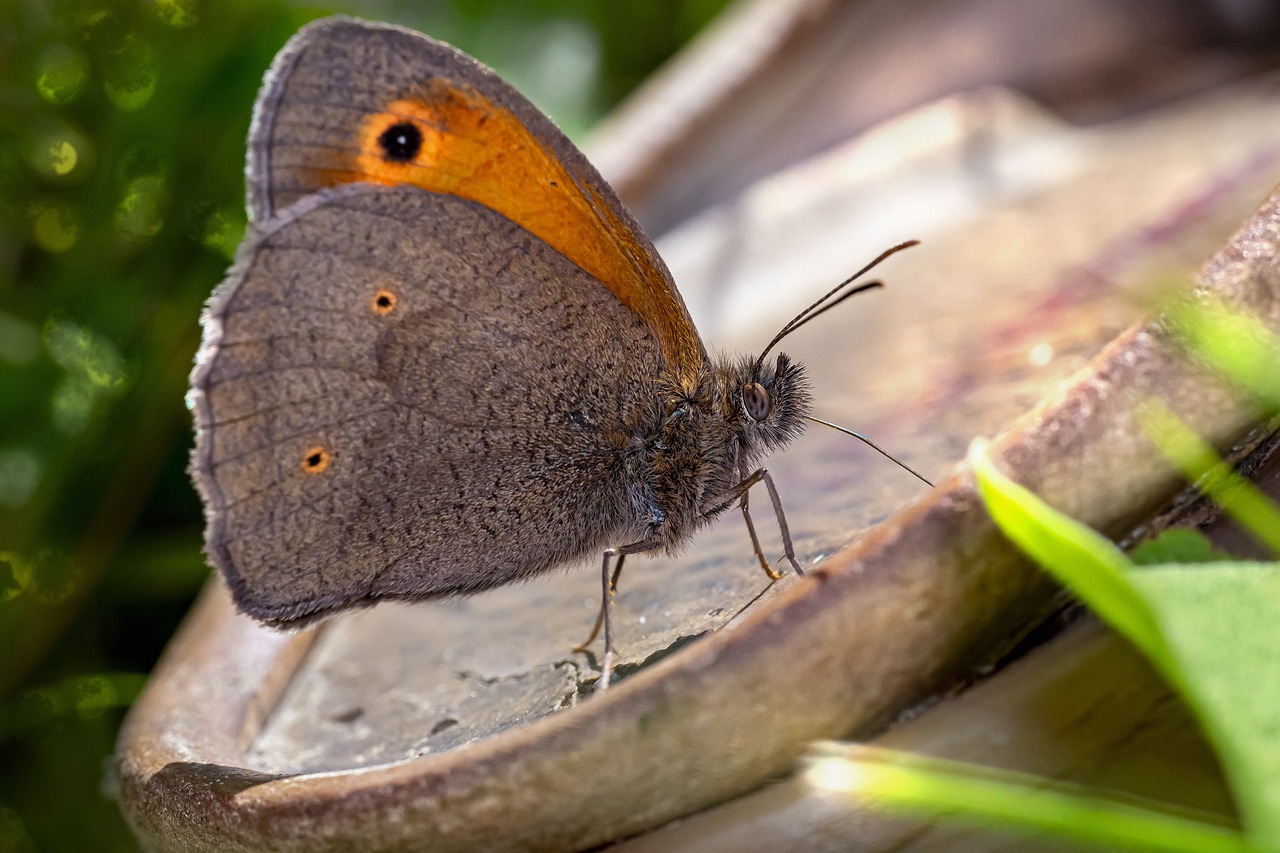The Meadow Brown (Maniola jurtina) is a widespread and common butterfly belonging to the Nymphalidae family, specifically within the subfamily Satyrinae. It is one of the most frequently seen butterflies across Europe and parts of Asia, known for its modest coloring and preference for grassy habitats.
Key Characteristics:
- Appearance:
- Wingspan: 42-50 mm (1.6-2.0 inches).
- Color:
- Upperside: The forewings are typically orange-brown with a prominent black eye spot. The hindwings are darker, ranging from brown to grayish brown.
- Underside: The hindwings are mottled brown or gray with subtle patterns, which help in camouflage, while the forewings have a lighter orange-brown tone with the distinctive black eyespot.
- Eyespot: A prominent black spot with a white center is located on the forewing, which can vary in size and number between individuals. Males tend to have a darker, more muted coloration compared to females.
- Behavior:
- Flight: The Meadow Brown has a characteristic slow and fluttering flight. It tends to stay low to the ground, especially when feeding or laying eggs, but it can also cover large distances in search of nectar or mates.
- Feeding: Adults feed on nectar from a wide variety of flowers, especially thistles, knapweeds, and brambles. They are commonly seen resting or feeding on wildflowers in meadows.
- Habits: Males patrol grassy areas searching for females, while females often spend more time hidden in vegetation, laying eggs on grasses.
- Habitat:
- The Meadow Brown thrives in a wide range of open grassy areas, including meadows, grasslands, pastures, roadside verges, and gardens. It is adaptable and can be found from lowlands to hilly regions.
- Life Cycle:
- Eggs: Females lay eggs individually on various grass species, including fescue, meadow grasses, and bents.
- Larvae: Caterpillars are green with light stripes running down their bodies. They feed on grasses and hide during the day, becoming more active in the evening or at night.
- Pupae: The pupa is green or brown and typically concealed in the grass or low vegetation.
- Adults: Adults emerge in a single generation, flying from June to September, though timing may vary with local conditions. It is one of the most abundant butterflies seen during the summer months.
- Range:
- The Meadow Brown is distributed throughout Europe, from southern Scandinavia to the Mediterranean, and is also found in parts of western Asia and North Africa. It is one of the most common and widespread butterflies in the UK.
- Conservation Status:
- The Meadow Brown is not considered threatened and is widespread across its range. Its adaptability to various habitats, including agricultural areas, has helped maintain stable populations, although intensive farming and habitat loss can locally impact numbers.
Conclusion:
The Meadow Brown is one of the most familiar and widespread butterflies in Europe, often seen flitting through meadows and grassy fields in the summer. While its coloration may be subdued, its presence is a hallmark of healthy, undisturbed landscapes. It plays a vital role in the ecosystem, particularly in grassland habitats, and its abundance is often a sign of biodiversity.
Visited 861 times, 1 visit(s) today
Views: 1231
Subscribe to the newsletter:
